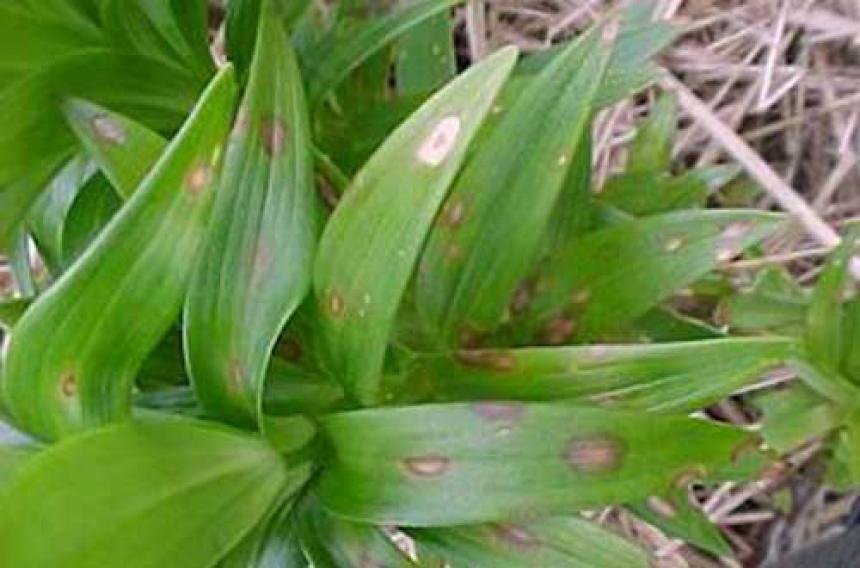Botrytis blight on lilies starts as oval shaped, reddish brown to tan spots on the leaves. The spots often have purple margins. The entire plants are destroyed as lesions coalesce resulting in a general blighting.. The causal agents are the fungi Botrytis elliptica and sometimes Botrytis cinerea.
Botrytis species can only be controlled by management of environmental conditions, sound cultural practices, and fungicide applications. Control weeds and remove plant debris. Space plants to allow good air circulation, reduce humidity within the canopy, and minimize leaf wetness duration. Improve horizontal air flow with fans. Reduce humidity by a combination of heating and venting in the evening, particularly when warm days are followed by cool nights Water in the morning if practical. Fungicides appropriate for Botrytis include26 GT, 26/36, Compass, Cleary's 3336, Botran, Decree, Daconil, Dithane,Heritage, Exotherm Termil, Sextant, Protect DF, and Medallion. Check labels for host appropriateness. Resistance to Cleary's 3336, 26 GT, and Sextant has been reported in Botrytis populations. Always alternate fungicide applications between materials with different modes of action to prevent resistance development.
